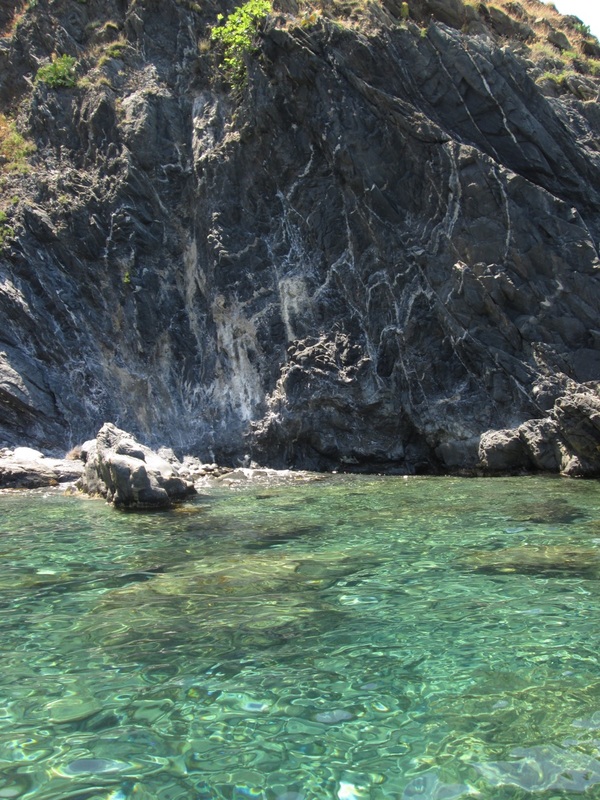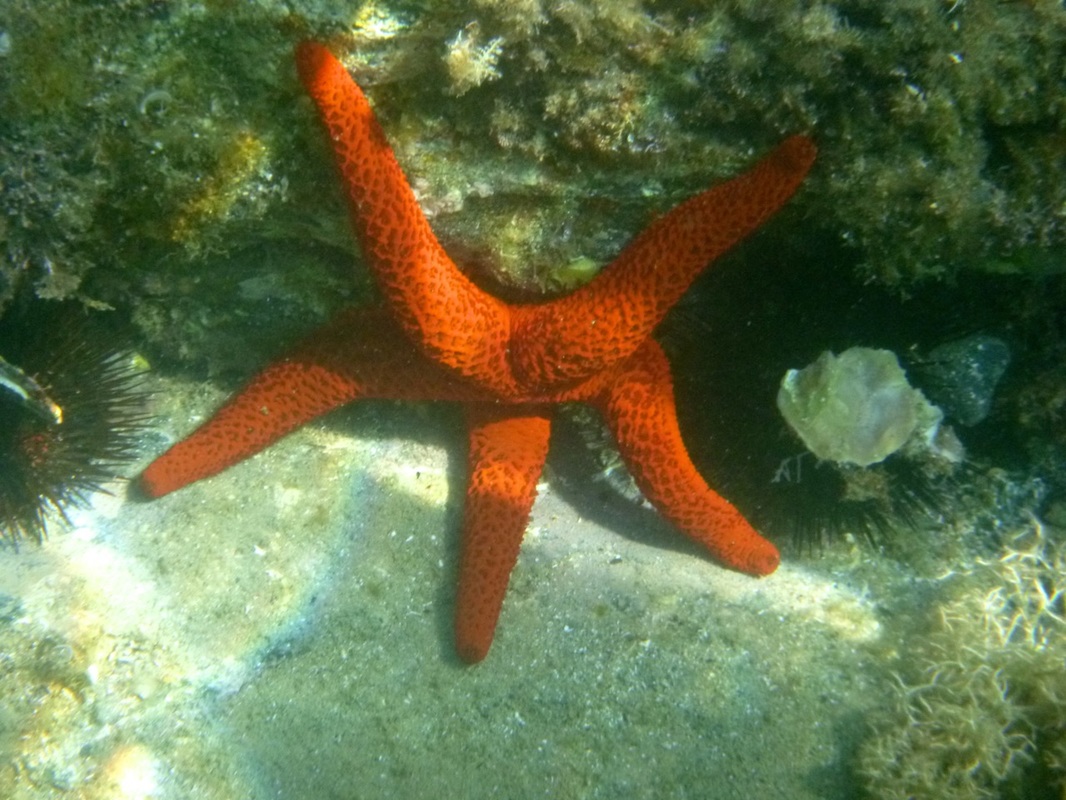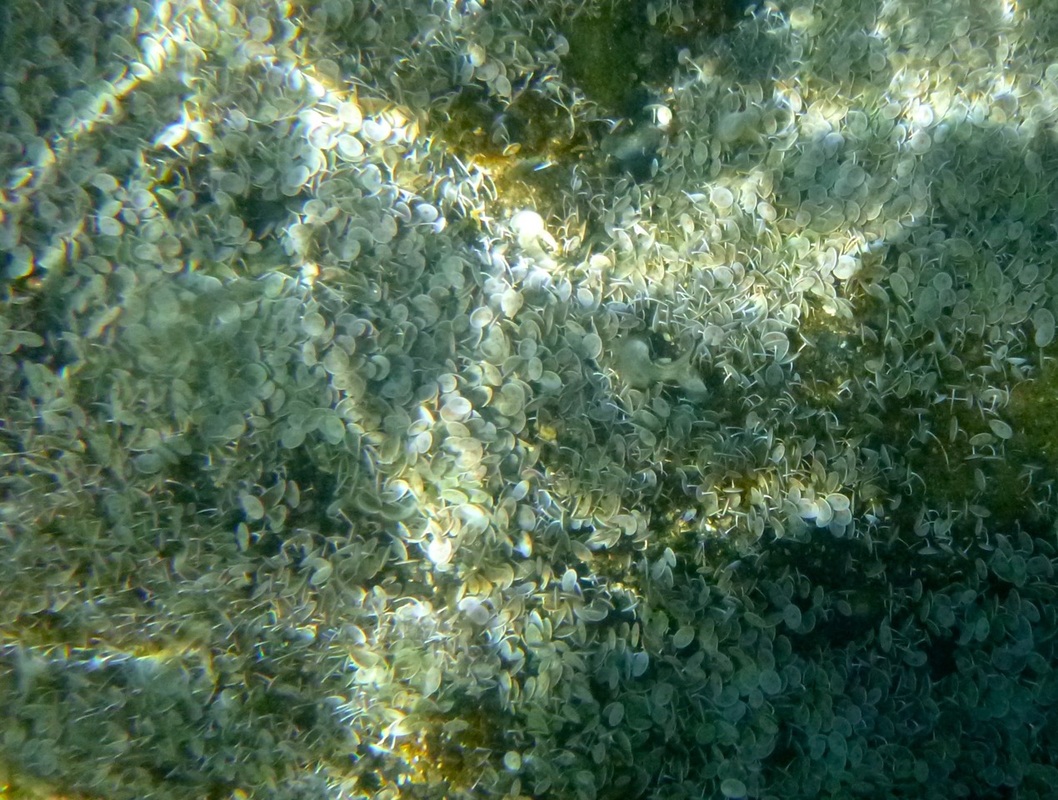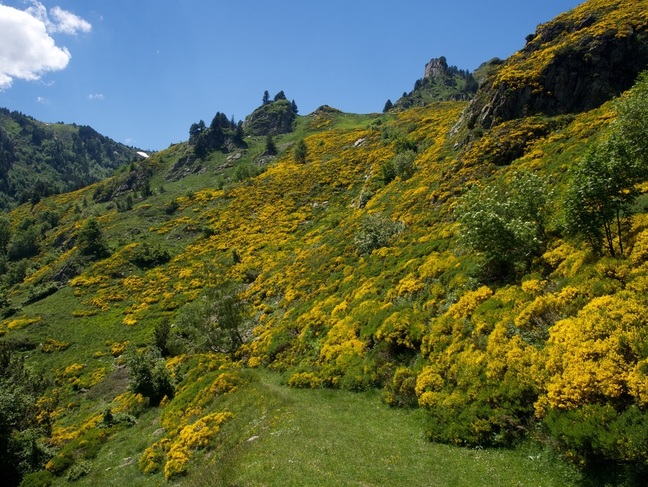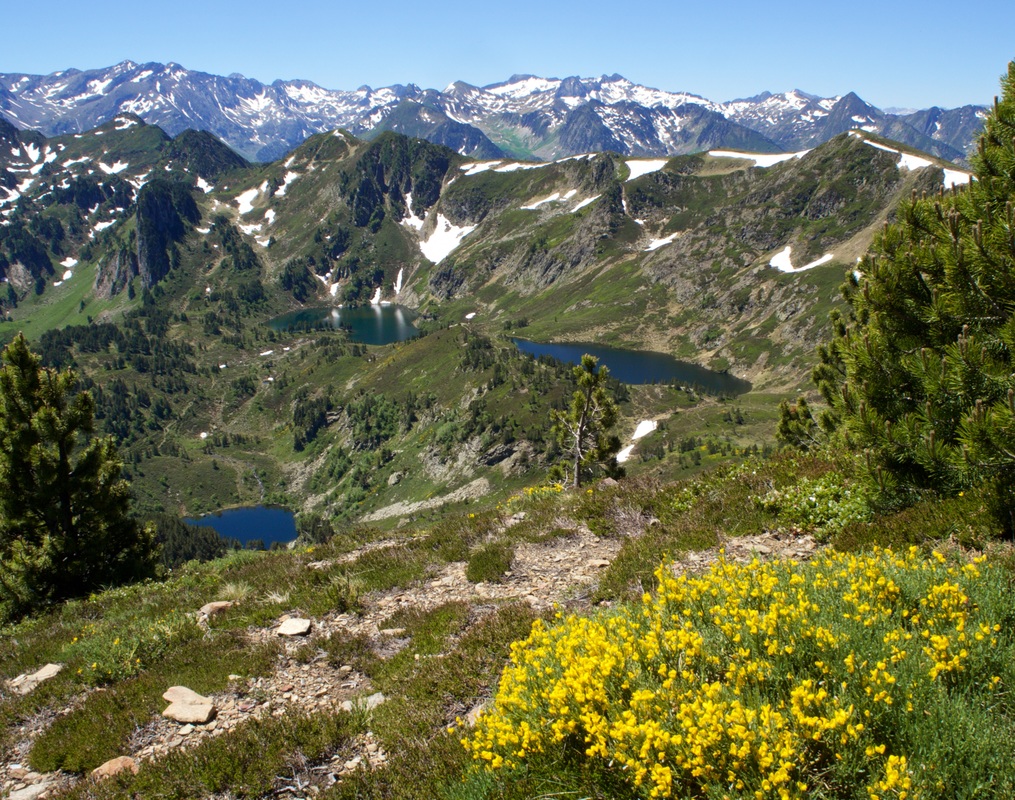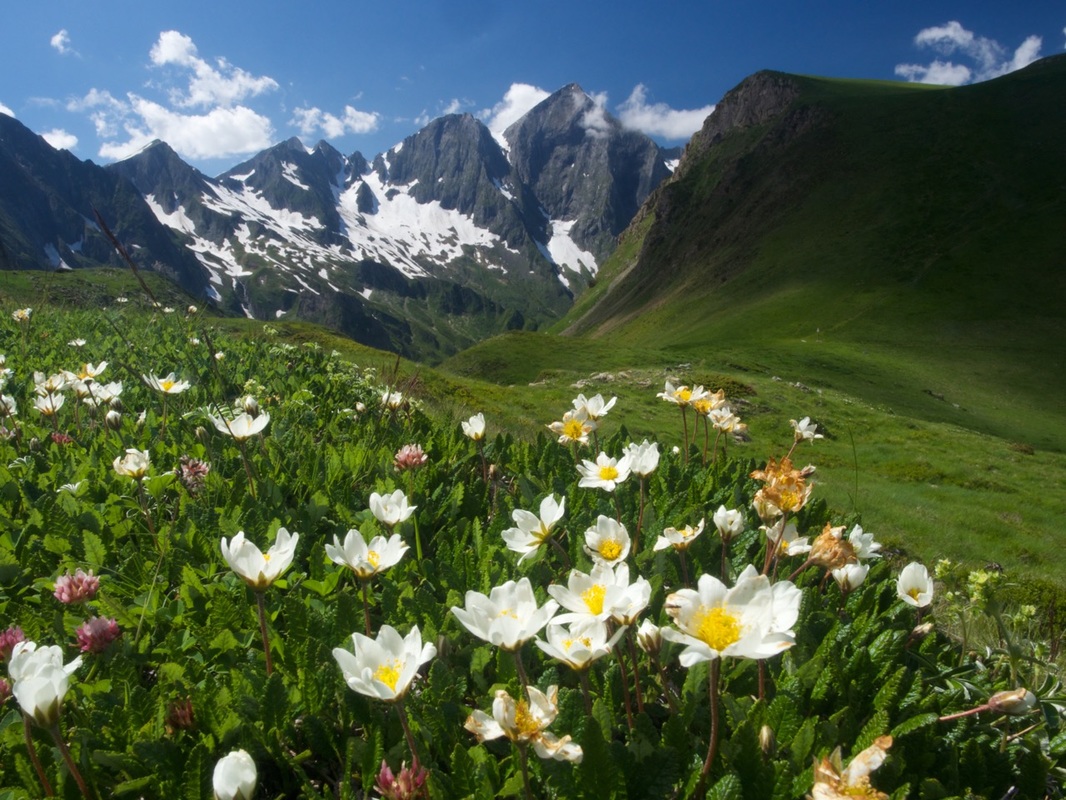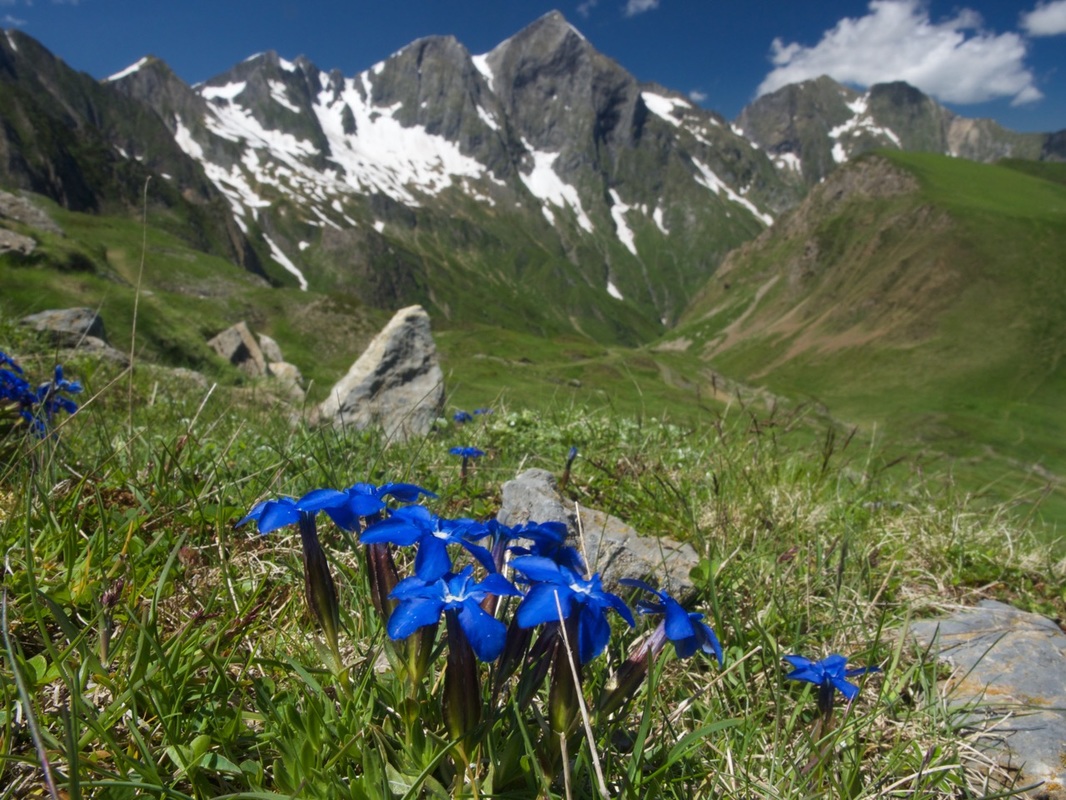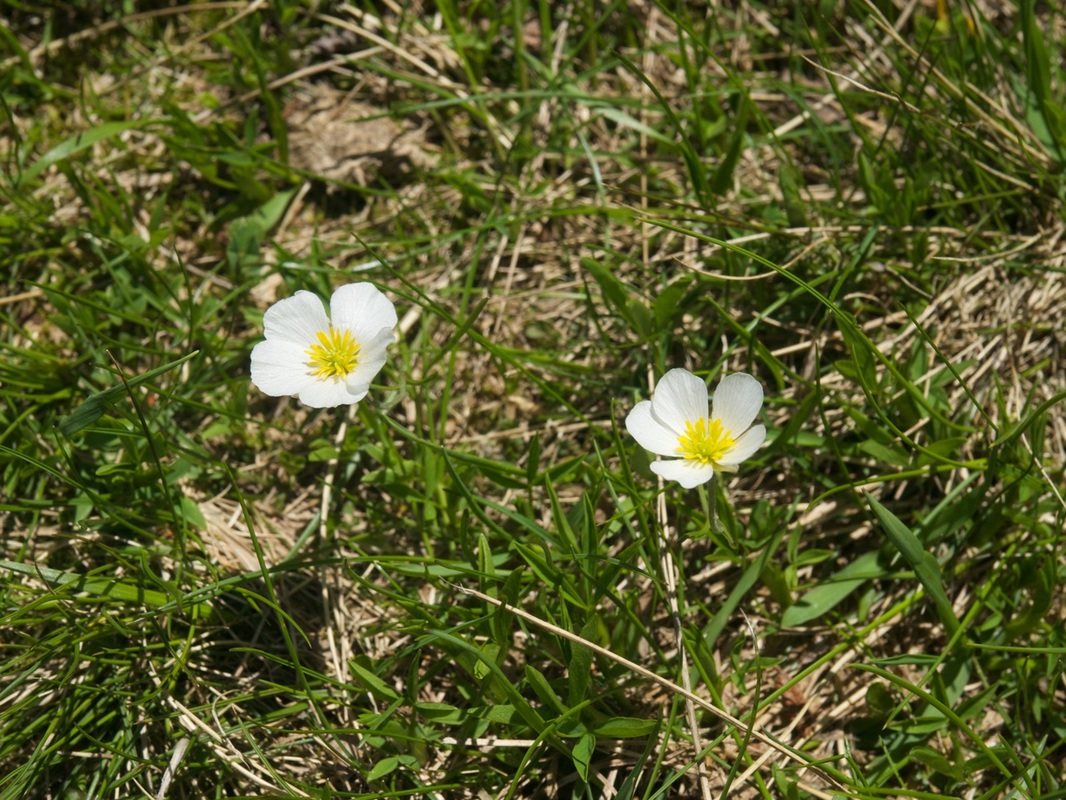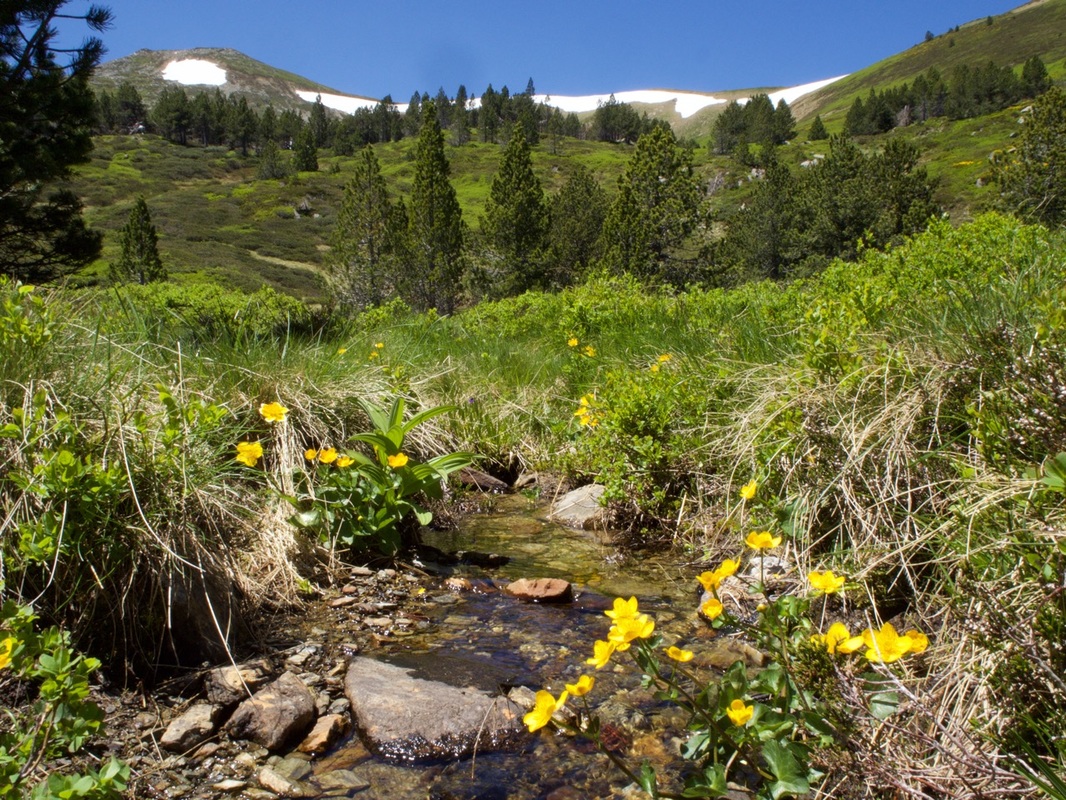As I have reported before, we spend many of these hotter, humid days at sea, normally heading down the coast into Spanish waters. The cliffs are truly dramatic, almost savage, but there are several tiny, almost invisible little bays with fine shingle beaches, and, on calm days, some lovely swimming.
I must confess we have spent little time on the various brown seaweeds at the foot of the cliffs, and the all-too-many black and spiny sea-urchins really worry me, but, in brilliant contrast, Martine has recently photographed some bright red starfish, on the move across the seabed. The one illustrated here seems to have got into some sort of yoga position, but is certainly a rather handsome specimen.
